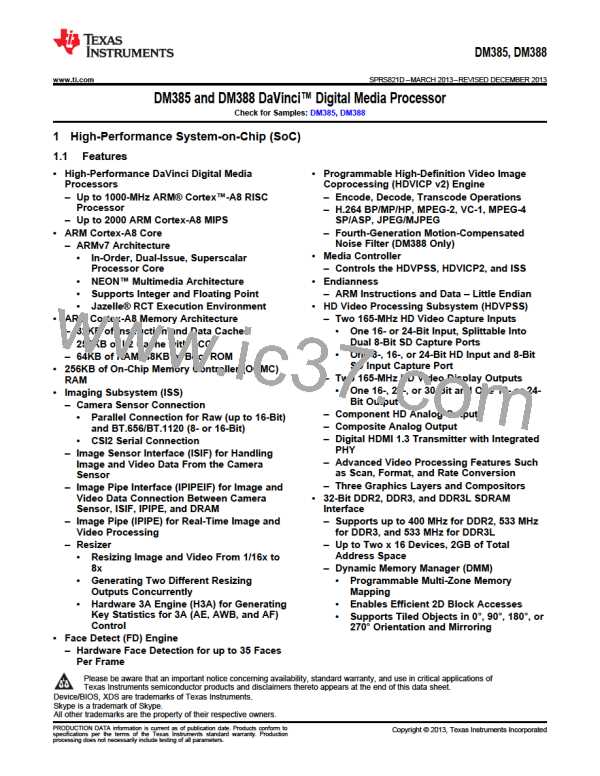DM385, DM388
www.ti.com
SPRS821D –MARCH 2013–REVISED DECEMBER 2013
8.17 Serial Peripheral Interface (SPI)
The SPI is a high-speed synchronous serial input/output port that allows a serial bit stream of programmed
length (4 to 32 bits) to be shifted into and out of the device at a programmed bit-transfer rate. The SPI is
normally used for communication between the device and external peripherals. Typical applications
include an interface-to-external I/O or peripheral expansion via devices such as shift registers, display
drivers, SPI EEPROMs, and Analog-to-Digital Converters (ADCs).
The SPI supports the following features:
•
•
Master/Slave operation
Four chip selects for interfacing/control to up to four SPI Slave devices and connection to a single
external Master
•
•
•
•
32-bit shift register
Buffered receive/transmit data register per channel (1 word deep), FIFO size is 64 bytes
Programmable SPI configuration per channel (clock definition, enable polarity and word width)
Supports one interrupt request and two DMA requests per channel.
For more detailed information on the SPI, see the Multichannel Serial Port Interface (McSPI) chapter in
the device-specific Technical Reference Manual.
8.17.1 SPI Peripheral Register Descriptions
The SPI peripheral registers are described in the device-specific Technical Reference Manual. Each
register is documented as an offset from a base address for the peripheral. The base addresses for all of
the peripherals are in the device memory map (see Section 2.10).
Copyright © 2013, Texas Instruments Incorporated
Peripheral Information and Timings
261
Submit Documentation Feedback
Product Folder Links: DM385 DM388

 TI [ TEXAS INSTRUMENTS ]
TI [ TEXAS INSTRUMENTS ]